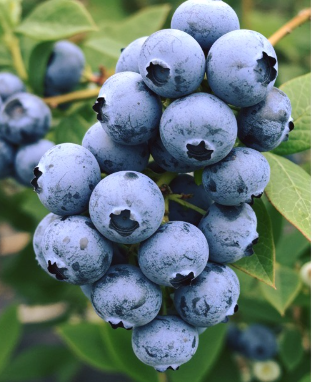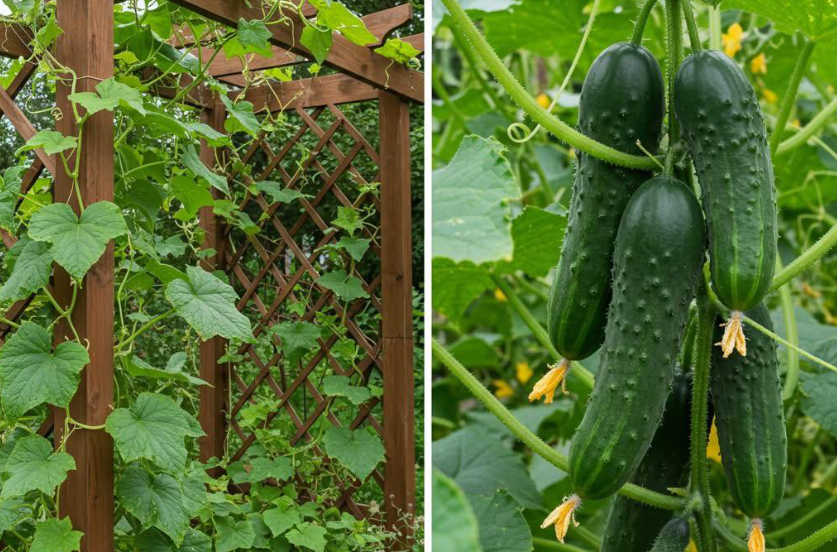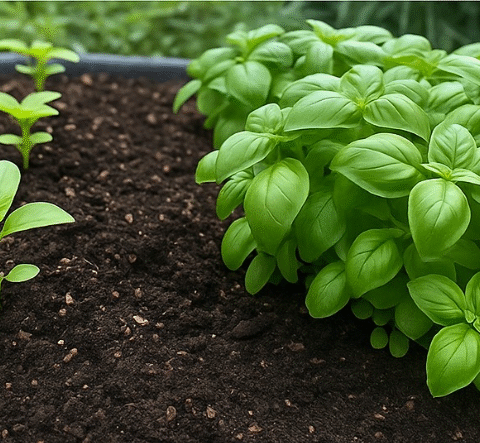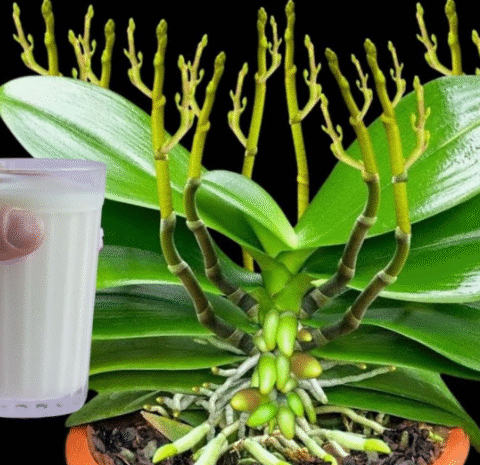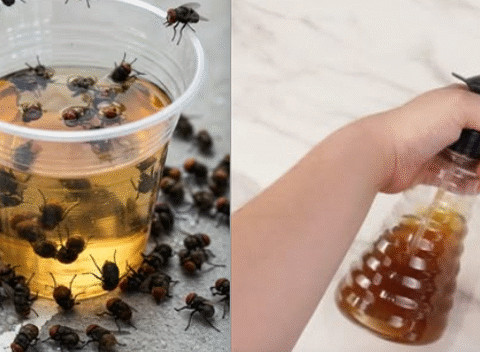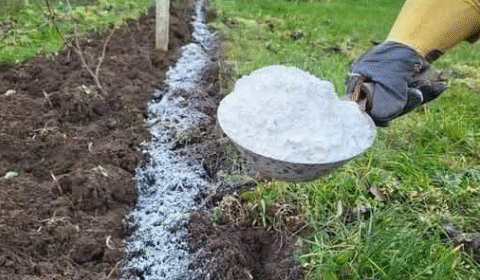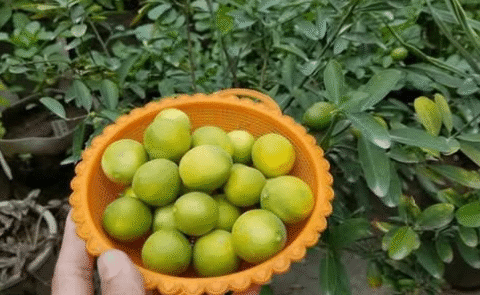How to Grow Blueberries in a Pot at Home
Nothing beats the experience of plucking fresh, juicy blueberries from your own patio or balcony—and they’re not just delicious; they’re a powerhouse of antioxidants, vitamins, and health benefits. From heart health to blood sugar management, blueberries shine. If you’ve ever wondered how to cultivate them at home—even in limited space—you’ve come to the right place.
Why Grow Blueberries in Containers? 🍇
Container gardening is a game-changer. With pots, you gain:
- Total soil control: Easily maintain the acidic soil (pH 4.5–5.5) blueberries crave—no battling alkaline ground soil. :contentReference[oaicite:3]{index=3}
- Space-saving flexibility: Ideal for patios, balconies, or cozy city gardens. :contentReference[oaicite:4]{index=4}
- Mobility & weather buffering: Shift pots for optimal sun, or move them indoors during cold snaps. :contentReference[oaicite:5]{index=5}
- Reduced soil-borne pests: Potted plants are less prone to many diseases common in traditional beds. :contentReference[oaicite:6]{index=6}
Expert Insight
“Container blueberries give gardeners mastery over the most challenging growing factor: soil acidity.” — Dr. Liessa Bowen, horticultural expert :contentReference[oaicite:7]{index=7}
—
1. Selecting the Right Blueberry Variety
Your choice here is vital—especially for containers:
- Dwarf & half-high varieties like Top Hat, Jelly Bean, Northblue, and Sunshine Blue stay compact but productive. :contentReference[oaicite:8]{index=8}
- Rabbiteye blueberries thrive in warm climates and tolerate heat well; they’re manageable in pots with regular pruning. :contentReference[oaicite:9]{index=9}
- In cooler or variable climates? Use northern highbush like Top Hat; in hot regions, go with Sunshine Blue or rabbiteye types. :contentReference[oaicite:10]{index=10}
Pro tip: Though many blueberries are self-fertile, planting two varieties with overlapping bloom times boosts fruit set. :contentReference[oaicite:11]{index=11}
—
2. Choosing the Perfect Pot & Soil
Pot Specifications
- Size matters: Start with 5–7 gallon (~20 L) pots for young plants. Mature bushes benefit from pots 20–24 inches wide and deep to support root spread. :contentReference[oaicite:12]{index=12}
- Material: Opt for lightweight, weather-resistant materials like plastic, resin, terracotta, or wood. Avoid metal, which overheats roots. :contentReference[oaicite:13]{index=13}
- Drainage is non-negotiable: Multiple holes and breathable pot sides are essential to prevent root rot. :contentReference[oaicite:14]{index=14}
Soil Mix
Blueberries prefer:
- Acidic soil with a pH between 4.5 and 5.5. :contentReference[oaicite:15]{index=15}
- Well-draining yet moisture-retentive structure.
Try one of these blends:
- 1:1 potting soil + sphagnum peat moss
- 1:1 sphagnum peat moss + shredded pine bark
- 2 parts coir + 2 parts peat moss + 1 part perlite
- Ericaceous (acid-loving) compost alone or mixed with soil-based compost. :contentReference[oaicite:16]{index=16}
Bonus tip: Mulch with pine bark or needles to preserve moisture and acidity. :contentReference[oaicite:17]{index=17}
—
3. Planting & Placement
Steps to ensure success:
- Fill the pot halfway with damp soil blend, tease the roots gently, and place the plant at its original depth. :contentReference[oaicite:18]{index=18}
- Fill remaining space; firm soil gently and water thoroughly. :contentReference[oaicite:19]{index=19}
- Plant in a location with at least 6–8 hours of full sun daily; partial shade in very hot regions may help. :contentReference[oaicite:20]{index=20}
—
4. Watering & Fertilizing
- Watering: Keep soil evenly moist—but not waterlogged. Let the top layer dry slightly between waterings. :contentReference[oaicite:21]{index=21}
- Fertilizing: Begin in the second year with slow-release, acid-specific fertilizers; apply in early spring, early summer, and early fall. :contentReference[oaicite:22]{index=22}
—
5. Pruning, Overwintering & Harvesting
Pruning
Begin pruning from the fourth year—remove dead or overly old canes to encourage fresh, fruitful growth. :contentReference[oaicite:23]{index=23}
Winter Care
Pots offer limited insulation. For colder climates:
- Wrap pots in burlap, bubble wrap, or place them in insulated spots (garage, shed). :contentReference[oaicite:24]{index=24}
- Mulch the top 2–3 inches to preserve root warmth. :contentReference[oaicite:25]{index=25}
Harvest Timing
You’ll likely start harvesting berries in year 3, with full yields around year 5 in many cases. :contentReference[oaicite:26]{index=26}
Harvest season typically spans from June to August—pick when berries fall off with a gentle touch. :contentReference[oaicite:27]{index=27}
—
6. Nutrition & Health Benefits Table
| Nutrient / Benefit | Amount per 100 g | Health Benefit |
|---|---|---|
| Calories | 57 kcal | Low-calorie, weight-friendly snack. :contentReference[oaicite:28]{index=28} |
| Vitamin C | 12–16% DV | Supports immunity and skin health. :contentReference[oaicite:29]{index=29} |
| Vitamin K | 11–16% DV | Crucial for blood clotting and bone strength. :contentReference[oaicite:30]{index=30} |
| Manganese | 11–16% DV | Antioxidant enzyme cofactor; bone and metabolism support. :contentReference[oaicite:31]{index=31} |
| Anthocyanins & Polyphenols | Variable | Potent antioxidants; may support heart health and aging protection. :contentReference[oaicite:32]{index=32} |
—
7. Frequently Asked Questions (FAQs)
- How long until I can pick berries?
Expect fruit in year 3 and full production by year 5. :contentReference[oaicite:33]{index=33} - Do I need multiple plants for fruit?
Not always, but cross-pollination from two varieties ensures larger, more consistent harvests. :contentReference[oaicite:34]{index=34} - Can I use regular garden soil in pots?
No. Regular soil may be alkaline and poorly draining. Use ericaceous potting mix instead. :contentReference[oaicite:35]{index=35} - How often should I water?
Keep soil moist—but not soggy. Adjust based on weather and pot dryness. :contentReference[oaicite:36]{index=36} - What pH level do blueberries need?
Acidic—between 4.5 and 5.5. :contentReference[oaicite:37]{index=37} - Can I overwinter pots outside?
Yes, with insulation using mulch or bubble wrap—or move them to a sheltered spot. :contentReference[oaicite:38]{index=38} - Is pruning necessary?
Yes—begin pruning in year 4 to remove older canes and promote new fruiting growth. :contentReference[oaicite:39]{index=39} - Which varieties suit hot climates?
Rabbiteye and semi-high types like Sunshine Blue are more heat-tolerant. :contentReference[oaicite:40]{index=40} - Can I grow blueberries indoors?
Yes—pots can be moved inside; just ensure ample light and acid soil. :contentReference[oaicite:41]{index=41} - What about pests?
Use nets for birds and organic pest control for insects like aphids. Container placement reduces soil-borne issues. :contentReference[oaicite:42]{index=42}
—
Summary
Growing blueberries in pots is
